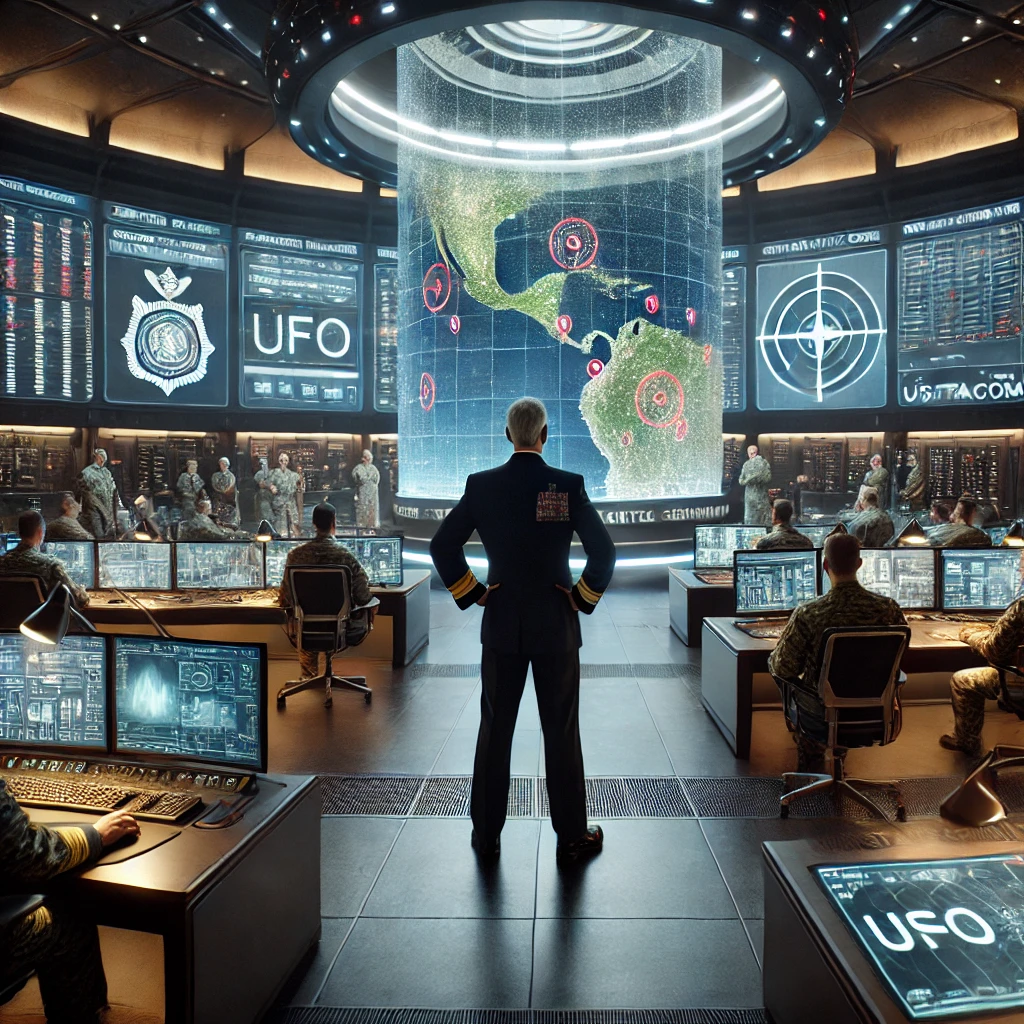United States Strategic Command (USSTRATCOM)

The recent Freedom of Information Act (FOIA) release, titled USSC Referred Redacted, sheds light on the UAP Interagency Task Force (UAP TF), sparking renewed interest in how the U.S. government is managing unidentified aerial phenomena (UAP). Although much of the document is heavily redacted, enough material has been disclosed to highlight the collaborative efforts across various federal agencies.
The USSC Referred Redacted document reveals a substantial focus on keeping United States Strategic Command (USSTRATCOM) leadership informed about developments related to the UAP Interagency Task Force (UAP TF), highlighting a strategic overlap despite USSTRATCOM’s traditional remit over nuclear deterrence, global strike capabilities, and missile defense. The document suggests that while USSTRATCOM isn’t directly involved in UAP investigation, the importance of briefings indicates a growing concern about the potential implications of UAPs on national defense infrastructure. Given USSTRATCOM’s authority over space operations and its mandate to protect U.S. strategic assets, these briefings underscore the potential for UAPs to intersect with critical areas of national security, reinforcing the need for interagency coordination. By keeping USSTRATCOM leadership in the loop, the document hints at a recognition that UAPs play a role within USSTRATCOM’s broader mission to ensure readiness against emerging, unconventional threats.
The Department of Defense (DoD) has established the All-domain Anomaly Resolution Office (AARO) to lead efforts in documenting, analyzing, and resolving UAP reports. AARO collaborates with various government agencies to address UAP incidents. In October 2023, the Office of the Director of National Intelligence (ODNI) and the DoD published the Fiscal Year 2023 Consolidated Annual Report on UAP, detailing the government’s approach to these phenomena.
While USSTRATCOM’s space operations might involve monitoring objects in space, the investigation and analysis of UAPs fall under the purview of AARO and related entities. Therefore, USSTRATCOM’s relationship to UAPs is indirect, focusing on space situational awareness rather than direct investigation of these phenomena.
In 2020, the leadership of United States Strategic Command (USSTRATCOM) was spearheaded by Admiral Charles A. Richard of the U.S. Navy, who had assumed command on November 18, 2019, succeeding General John E. Hyten. Supporting him was Lieutenant General Thomas A. Bussiere from the U.S. Air Force, who took on the role of Deputy Commander on April 20, 2020, following Vice Admiral David Kriete. The Chief of Staff during this period was Major General Randy S. Taylor of the U.S. Army, who served from August 2019 until July 31, 2020. The team also included Fleet Master Chief John J. Perryman from the U.S. Navy as the Senior Enlisted Leader, beginning his tenure on September 9, 2020, after Chief Master Sergeant Patrick F. McMahon. This cohesive leadership team was responsible for overseeing USSTRATCOM’s core mission areas, which include strategic deterrence, nuclear operations, and global strike capabilities, ensuring a robust national defense posture amid evolving global threats.


